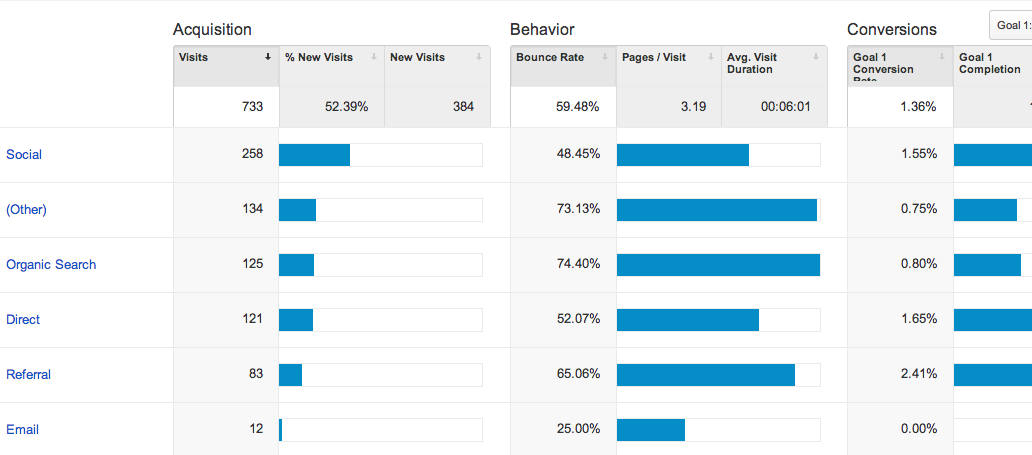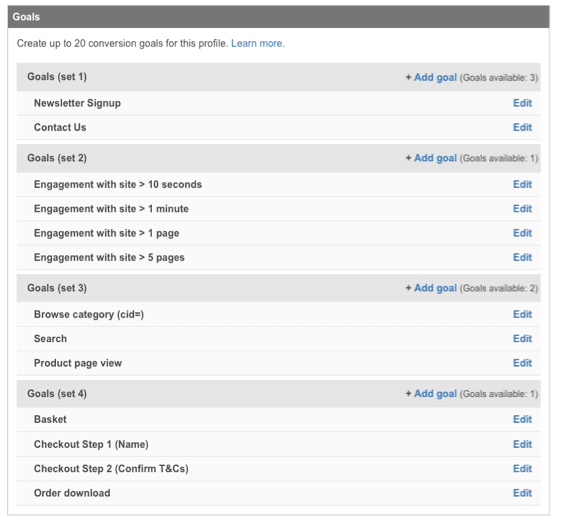Comprehending What Data Is Google Analytics Goals Unable to Track
Comprehending What Data Is Google Analytics Goals Unable to Track
Blog Article
Introducing the Blind Attractions: Understanding What Google Analytics Goals Can not Gauge
In the realm of digital analytics, Google Analytics stands as a powerful device for tracking and assessing on-line user communications. Recognizing what Google Analytics objectives can not measure is vital for getting an extensive view of user habits and involvement.
User Actions on External Platforms
Recognizing how individuals communicate on exterior systems is crucial for optimizing on the internet approaches. Exterior platforms, such as social networks networks, recommendation internet sites, and online discussion forums, play a considerable function in driving web traffic to a firm's site. By evaluating individual habits on these platforms, organizations can acquire useful understandings into the efficiency of their advertising and marketing efforts and the choices of their target market.
One secret aspect of individual habits on external platforms is the recommendation resource. By tracking where the customers are originating from, businesses can identify which platforms are driving the most traffic to their website. This information can assist business designate their resources better, concentrating on the systems that generate the most effective results.

Offline Conversions and Communications
Assessing individual behavior on external systems gives valuable understandings right into on the internet techniques; nonetheless, taking into consideration offline conversions and interactions is just as important for a thorough understanding of a company's overall performance. While Google Analytics succeeds at tracking online communications, it falls brief in catching the complete customer journey that usually consists of offline touchpoints. Offline conversions, such as in-store purchases or phone inquiries, play a significant role in numerous services' success. Ignoring these communications can lead to an altered sight of the effectiveness of marketing campaigns and overall organization efficiency.

Attribution Beyond Last Click
When delving into the world of digital advertising and marketing analytics, it ends up being important to look beyond the single touchpoint of the last click for a much more thorough understanding of attribution. While Google Analytics offers valuable insights right into individual actions, depending entirely on last-click attribution can be limiting - what data is google analytics goals unable to track. Acknowledgment designs that surpass the last click offer an extra nuanced sight of the consumer journey, taking into consideration all the touchpoints that bring about a conversion
Attribution beyond the last click enables marketing experts to assign credit scores to different interactions along the conversion course, providing a more clear photo of the efficiency of various marketing networks. By checking out multi-touch acknowledgment designs such as straight, time decay, or position-based attribution, businesses can much better allocate their advertising and marketing budgets and optimize their approaches for maximum effect.
Recognizing the impact of each touchpoint in the conversion process is essential for making informed choices and making the most of ROI. By welcoming acknowledgment beyond the last click, services can obtain much deeper insights right into customer habits and tailor their advertising efforts better.
Cross-Device and Cross-Browser Tracking

Likewise, cross-browser monitoring matches cross-device monitoring by catching individual actions as they switch between various web browsers. Recognizing exactly how customers connect with web sites on different browsers can help marketers maximize their on the internet experiences to guarantee uniformity and capability across different systems.
Qualitative Data and Customer Intent
Comprehending customer intent through qualitative information analysis is important for establishing targeted electronic advertising methods that resonate with the requirements and choices of the target market. Qualitative information gives understandings right into the 'why' behind individual actions, clarifying motivations, emotions, and choices that quantitative data alone can not catch. By evaluating individual responses, remarks, and communications, marketing professionals can reveal important information regarding customer intent, allowing them to customize their messaging, web content, and offerings to much better straighten with what their audience is seeking.
Qualitative information additionally helps in comprehending the context in which customers engage with a web site or application. This contextual understanding allows online marketers to produce even more appropriate and personalized experiences, eventually driving greater involvement and conversion prices. By delving right into individual intent with qualitative data analysis, organizations can acquire a much deeper understanding of their target market, leading to more effective marketing techniques that fulfill users' requirements and assumptions.
Verdict
To conclude, Google Analytics objectives have limitations in determining user actions on exterior platforms, offline conversions, acknowledgment beyond last click, cross-device and cross-browser tracking, and qualitative data associated to individual intent. what data is google analytics goals unable to track. It is necessary for companies to be familiar with these unseen areas in order to supplement their information analysis with various other devices and approaches to acquire a more extensive understanding of their audience and improve their overall digital marketing strategies
By analyzing individual actions on these systems, services can gain important understandings into the effectiveness of their advertising initiatives and the choices of their target audience.
Evaluating user habits on exterior platforms gives useful insights into on the internet techniques; nonetheless, thinking about offline conversions and communications is equally imperative for an extensive understanding of a firm's overall performance.In electronic advertising and marketing analytics, moving beyond last-click acknowledgment to check out cross-device and cross-browser monitoring is important for obtaining an alternative understanding of individual communications across different systems and gadgets. By analyzing individual feedback, remarks, and content interactions, marketers can uncover beneficial information regarding individual intent, enabling them to tailor their messaging, see content, and offerings to better straighten with what their audience is looking for.
By diving right into individual intent with qualitative data analysis, businesses can gain a deeper understanding of their target audience, leading to much more reliable marketing approaches that fulfill users' assumptions and needs.
Report this page